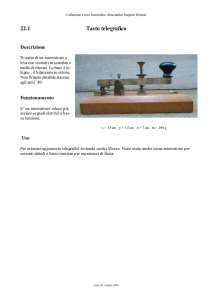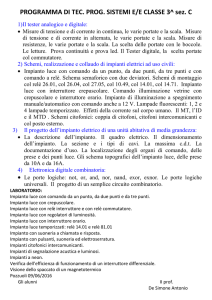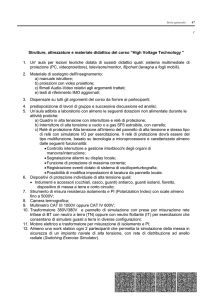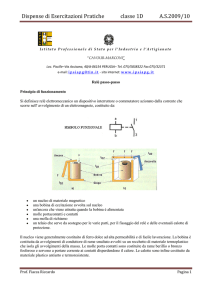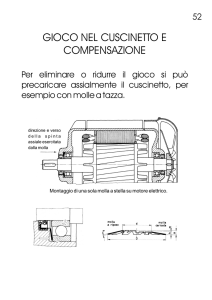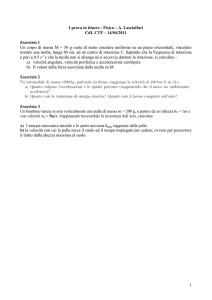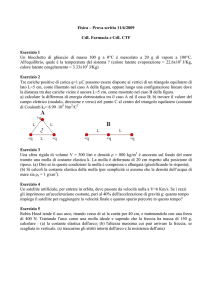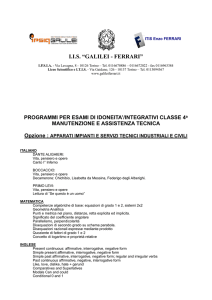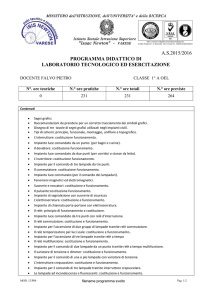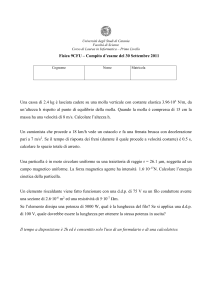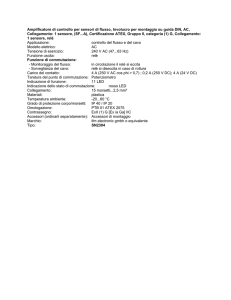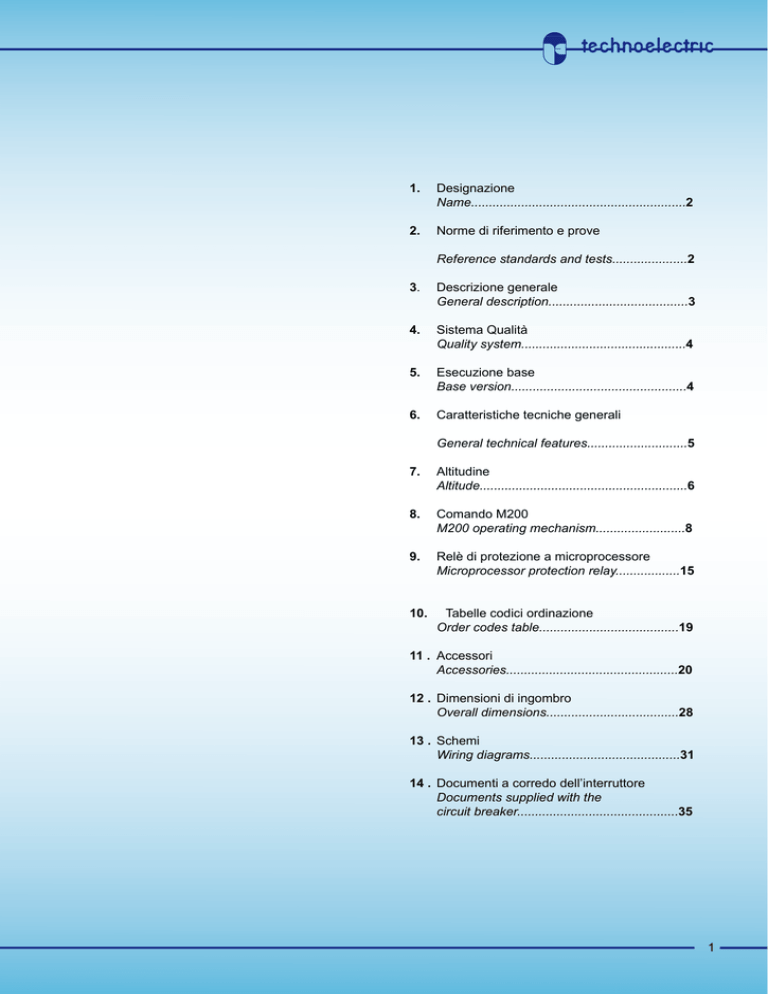
1. Designazione Name............................................................2
2. Norme di riferimento e prove Reference standards and tests.....................2
3. Descrizione generale General description.......................................3
4. Sistema Qualità Quality system..............................................4
5. Esecuzione base Base version.................................................4
6. Caratteristiche tecniche generali General technical features............................5
7. Altitudine Altitude..........................................................6
8. Comando M200 M200 operating mechanism.........................8
9. Relè di protezione a microprocessore
Microprocessor protection relay..................15
10. Tabelle codici ordinazione
Order codes table.......................................19
11 . Accessori Accessories................................................20
12 . Dimensioni di ingombro
Overall dimensions.....................................28
13 . Schemi
Wiring diagrams..........................................31
14 . Documenti a corredo dell’interruttore
Documents supplied with the
circuit breaker.............................................35
1. Designazione
1. Name
2. Norme di riferimento e prove
2. Reference standards and tests
Gli interruttori della serie MF sono conformi alle norme
IEC 62271-100 e IEC 60694 ed hanno superato le
deguenti prove relative agli interrutori di classe M1:
2.1.
· Prove di tipo certificate presso il CESI (Centro Elettrotecnico Sperimentale Italiano).
· Prove dielettriche
o
o
prove di tenuta ad impulso atmosferico
prova di tenuta a frequenza d’esercizio
· Prova di riscaldamento
· Prova di tenuta alla corrente di breve durata ed alla corrente di picco
· Prove meccaniche
· Prova di chiusura e d’interruzione alle correnti di corto circuito
Sono conformi inoltre alle norme:
IEC 60068 UNI ISO 2081 rivestimenti protettivi
IEC 60694 EN 50082 compatibilità elettromagnetica.
The circuit-breaker of the MF series comply with
IEC 62271-100 and IEC 60694 standards and have
passed the following tests for class M1
circuit-breaker:
2.1. Certified type tests at CESI (Centro Elettrotecnico Sperimentale Italiano - Italian Experimental Electrotechnical Committee)
· Dielectric tests
·
·
·
·
o
o
lightning impulse tests
working frequency test
Power test
Short-time and peak current test
Mechanical tests
Making and breaking capacity tests at short circuit current
They also comply with the following standards:
IEC 60068 UNI ISO 2081 protective coating
IEC 60694 EN 50082 electromagnetic compatibility
2.2.
· Prove individuali di collaudo in fabbrica
Per ogni interruttore viene redatto un certificato di collaudo comprendente le seguenti prove:
A test certificate is drawn up for each circuit
breaker including the following tests:
· Prova di isolamento a frequenza d’esercizio · Insulation test at power frequency for the · Misura della resistenza dei circuiti principali
· Prova di funzionamento meccanico
· Prova di funzionamento elettrico
· Rilievi dei tempi di manovra
· Rilievo contemporaneità
· Prova di tenuta gas SF6 su ogni polo
· Main circuit resistance measurement
· Mechanical operation test
· Electric operation test
· Operation time measurement
· Simultaneousity test
· SF6 gas seal test on each pole
dei circuiti principali e dei circuiti ausiliari
2.2. Individual testing at the factory
main and the auxiliary circuits
3. Descrizione generale
3. General description
Gli interruttori della serie MF 24 e MF 24P sono apparecchi di media tensione che lavorano in un campo di
tensioni da 12 a 24 kV.
Essi sono costituiti da 3 poli separati disposti in linea
ed azionati simultaneamente da un unico leverismo e
da un comando meccanico a molla tipo M200.
I poli utilizzano come dielettrico e come mezzo d’estinzione il gas esafluoruro di zolfo (SF6) in
bassa pressione ed esecuzione sigillata (IEC 62271100) per cui non abbisognano di alcun controllo del
gas per tutta la vita in esercizio dell’interruttore.
Il controllo
della tenuta
del gas
viene
eseguito
in fabbrica.
Il sigillo apposto su ogni polo è la garanzia della sua
perfetta ermeticità.
Gli interruttori della serie MF hanno un elevato
grado di affidabilità, di robustezza e di semplicità di
impiego.
Il loro peso limitato e la loro semplice configurazione
li rendono particolarmente adatti nella movimentazione, nella loro sistemazione in quadri, cabine o
spazi angusti.
Il loro ampio dimensionamento dielettrico esterno ed
interno è garanzia per l’impiego anche in ambienti
polverosi e polluti.
I 3 attacchi superiori ed i 3 attacchi inferiori del circuito di potenza dell’interruttore hanno uguali caratteristiche e terminano con una vite di collegamento M12 (coppia di serraggio 84 Nm).
Il loro ampio dimensionamento e robustezza li rende
adatti ad ogni tipo di barratura di collegamento
esterna.
The circuit-breaker of the MF 24 and MF 24P series
are medium voltage equipment working in a voltage
range of 12 to 24 kV.
They consist of 3 separate poles arranged in a line
and actuated simultaneously by a single leverage
and by a mechanical spring mechanism type M200.
The poles are sealed with low pressure sulphur
hexafluoride gas (SF6) as dielectric and extinguishing
media (IEC 62271-100), so they need no gas check
for the entire operating life of the circuit breaker.
The gas seal check is performed at the factory.
The seal on each pole is a guarantee of its perfect
sealing.
The circuit-breaker of the MF series are extremely
reliable, sturdy and easy to use.
Thanks to their limited weight and simple
configuration they are especially suitable for handling,
for placement into panels, cabins or small spaces.
Their wide external and internal dielectric sizing is a
guarantee for use also in polluted and dusty
environments.
The 3 upper connections and the 3 lower connections
of the circuit breaker power circuit have the same
features and end with a fastening screw M12
(tightening torque 84 Nm).
Their various numbers of sizes and sturdiness make
them suitable for fitting on any type of external
connection bar.
Essi trovano il loro impiego nella distribuzione secondaria di media tensione e nelle cabine di trasformazione media tensione/bassa tensione.
Si adattano particolarmente nelle cabine ibride aria/
SF6 permettendo un razionale utilizzo dello spazio
ed un’ottimale distribuzione dei campi elettrici all’interno dei componenti delle cabine.
In particolari gli interruttori della serie MP 24P, con
protezione di max corrente autoalimentata attraverso
3 trasformatori di corrente toroidali, permettono l’impiego anche in mancanza d’alimentazione ausiliaria.
Grazie al sistema di blocchi previsti nel comando
con
microinterruttori d’elevata qualità e prestazioni, e
contatti ausiliari del tipo a strisciamento autopulenti,
gli interruttori della serie MF garantiscono massima
affidabilità di servizio e sicurezza oer gli operatori rendendo possibile un comando a distanza affidabile.
They are used for secondary medium voltage
distribution and in medium voltage-low voltage
transformation cabins.
They are especially suitable for air/SF6 hybrid cabins,
allowing an advantageous use of the space and an
optimum distribution of the electric fields into the
cabin components.
In particular, the circuit-breaker of the MF 24P series
with max current protection self-powered by 3
toroidal current transformers allow use also in case of
auxiliary power failure.
Thanks to the system of locks provided into the
operating mechanism, to the high quality microswitches and to the self-cleaning sliding auxiliary
contacts, the circuit breakers of the MF series ensure
maximum reliability and safety for the operators, thereby making a remote
control reliable.
4. Sistema qualità
4. Quality system
In conformità alla normativa ISO 9001: 2000
Ente certificatore: RINA.
5. Esecuzione base
Gli interruttori base della serie MF 24 e MF 24P
nelle loro esecuzioni base sono allestiti in versione laterale destra (1) con il seguente
corredo:
- 2 piedi di fissaggio
- 1 traversa di sostegno interruttore
- 3 poli separaticon interasse
300mm o 230mm
- 1 comando di tipo M200 completo di:
o 1 leva di ricarica manuale molla di chiusura
o 1 manopola di chiusura
o 1 manopola di apertura
o 1 segnalatore visivo molla chiusura carica/scarica
o 1 segnalatore visivo molla apertura carica/scarica
o 1 indicatore di posizione interruttore
aperto/chiuso
o 1 morsettiera con 6 morsetti liberi
o 1 interruttore ausiliario con 4 contatti n.a. + 4 contatti n.c.
o 1 cablaggio di base.
(1) La versione laterale sinistra è possibile dietro richiesta specifica del cliente.
In conformity with ISO 9001 standards: 2000.
Certifying body: RINA
5. Base version
The circuit-breaker of the MF 24 and MF 24P
series in their standard configuration are arranged
in right side version (1) with the following
equipment:
- 2 fixing feet
- 1 switch support crosspiece
- 3 separate poles with a distance between
centres of 300mm or 230mm
- 1 operating mechanism type M200 fitted with:
o 1 making spring manual reload lever
o 1 making knob
o 1 breaking knob
o 1 visual indicator of charged/descharged making spring
o 1 visual indicator of charged/descharged
opening spring
o 1 on/off switch position indicator
o 1 terminal board with 6 terminals
o 1 auxiliary switch with 4 n.o. contacts + 4
n.e contacts
o 1 standard harness
.
(1) The left side version is available on request.
6. Caratteristiche tecniche generali
6. General technical features
7. Altitudine
7. Altitude
Le parti interne di un’apparecchiatura isolate in SF6
non sono sensibili alle variazioni di quota.
Per le parti esterne isolate in aria il potere dielettrico dell’isolamento esterno dell’apparecchiatura è
influenzato dalle proprietà dell’aria, densità, umidità,
etc.
Aumentando l’altezza s.l.m., la densità dell’aria ed
anche il potere dielettrico diminuiscono.
Questo fatto deve essere preso in considerazione,
quando si progetta l’isolamento di un equipaggiamento e si determina la minima distanza d’istallazione ad un’altitudine di oltre 1000m s.l.m.
Internal parts of equipment insulated with SF6 are not
influenced to altitude variations.
For external parts insulated in air, the dielectric streng
of the external insulation is affected by the air properties, humidity, density, etc.
When height above seal level increases, air density
and dielectric power decrease.
This should be taken into account in the design of an
equipment insulation, when the minimum installation
distance is set at a height of over 1000 m above sea
level
Correction procedure:
Procedura di correzione:
Metodo 1:
Conoscendo l’altitudine H del luogo si trova il corrispondente fattore di altitudine K dalla fig. A. Dividere
la tensione di tenuta a impulso e la tensione di tenuta
a frequenza industriale (fig. B) corrispondente alla
tensione nominale per il fattore di altitudine K.
Le tensioni di prova, così ottenute, sono quindi valide
per provare in laboratorio A.T. ad altitudine minore di
1000m s.l.m. e determinano il dimensionamento dell’isolamento.
Metodo 2:
Dividere la tensione nominale dell’apparecchiatura
per il fattore d’altitudine K.
Il risultato è la nuova tensione nominale che determina la scelta dell’equipaggiamento da installare.
Method 1:
Knowing the altitude H of the place, find the
corresponding altitude factor K in figure A.
Divide the impulse withstand voltage and the power
frequency withstand voltage (fig. B) corresponding to
the rated voltage by the height factor K.
The trial voltages thus obtained are therefore valid to
test H.V. in laboratory at a height of less than 1000 m
a.s.l. and they determine the insulation sizing.
Method 2:
Divide the equipment rated voltage by the altitude
factor K.
The result is the new rated voltage that determines
the selection of the equipment to be installed
fig. A.
Curva per determinare il fattore K in relazione
all’altitudine H
(in accordo a DIN VDE 0111 Parte1 Capitolo 1)
Curve for determining factor K based on height H
(according to DIN VDE 0111 Part 1 Chapter 1)
fig. B
Livelli d’isolamento standard 1kV < Um < 52kV
Lista 1 e lista 2 (selezione in relazione al grado di
rischio)
Standard insulation levels 1kV < Um < 52kV
List 1 and list 2 (selection according to the risk
factor)
Esempio.
Example.
Metodo 1:
Altitudine del luogo
Fattore di altitudine
ricavato dalla fig. A
H = 2000m
K = 0.89
Altitude factor obtained
from fig. A
Um = 17.5 kV
Maximum voltage for the
equipment
Massima tensione per
l’apparecchio Method 1:
Altitude of the place
H = 2000m
K = 0.89
Um = 17.5 kV
Determinazione del livello di isolamento (fig. B):
tensione impulso
UrB = 95 kV
Determining the insulation level (fig. B):
impulse voltage
UrB = 95 kV
Tensione a frequenza
industriale power frequency
voltage
UrW = 38 kV
UrW = 38 kV
Il livello di isolamento richiesto ad un’altitudine di
2000m s.m.l.è pertanto:
tensione impulso
UrB = 95 / 0.89 = 106 kV
The insulation level required at a height of 2000 m
a.s.l. therefore is:
impulse voltage
UrB = 95 / 0.89 = 106 kV
Tensione a frequenza
industriale power frequency
voltage
UrW = 38 / 0.89 = 43 kV
UrW = 38 / 0.89 = 43 kV
L’isolamento dell’apparecchiatura deve pertanto
essere adatto ad una tenuta impulso di 106 kV e ad
una tenuta a frequenza industriale di 43 kV quando è
provato in un luogo sotto i 1000m s.l.m.
The equipment insulation must therefore be suitable
for an impulse withstand of 106 kV and for a power
frequency withstand of 43 kV when tested in a place
below 1000 m a.s.l.
Metodo 2
Tensione nominale dell’apparecchiatura.
Determinato il fattore di altitudine K dalla fig. A, si
divide la massima tensione che l’equipaggiamento
deve sopportare per questo fattore.
Il risultato è la tensione nominale richiesta per l’apparecchio.
Um = 17.5 / 0.89 = 19.6 kV
Method 2
Equipment rated voltage.
Once the altitude factor K has been determined as
per fig. A, the maximum voltage the equipment must
withstand is divided by this factor.
The result is the rated voltage required for the equipment.
Um = 17.5 / 0.89 = 19.6 kV
Per cui la versione da scegliere dell’apparecchio da
installare a 2000m è Um = 24 Kv
The version of an equipment to be installed at 2000m
must therefore be Um = 24 Kv
8. Comando M 200
8. M 200 operating mechanism
9
8
7
6
Designazione
Comando M 200
Name
5
4
M 200 operating mechanism
Energia 200 J
Energy: 200 J
3
2
Tipo meccanico
a molla
1
Type mechanical
operating mechanism
1 Leva carica manuale
1Manual loading lever
2 Contamanovre
2 Operating counter
3 Indicatore carica molla chiusura
3Making spring load indicator
4Blocco chiave
4Key lock
5 Manipolatore di apertura
5Breaking knob
6 Manipolatore di chiusura
6Making knob
7 Indicatore carica molla apertura
7Breaking spring load indicator
8 Indicatore posizione interruttore C/O
9 Relè di protezione max corrente
8C/O circuit breaker position indicator
9Max current protection relay
8.1 Disposizione interna
8.1 Internal layout
1
2
6
4
5
A
B
7
8
Nella zona A sono disposte le parti meccaniche di
potenza del comando formanti il dispositivo di manovra (coperto da brevetto). Esse sono sostenute dalla
base (1) e dal fianco (2) in lamiera d’acciaio di forte
spessore zincate e passivate.
La rimozione del fianco (2) permette un facile accesso
alle varie parti meccaniche.
Nella zona B sono disposte, oltre alla molla di chiusura
(4), le varie parti elettriche di asservimento come:
•
•
•
•
Zone A houses the operating mechanism power parts
forming the operating device (patent-protected).
They are supported by the base (1) and by the side
(2) made of galvanised and passivated high-thickness sheet steel.
Removing the side (2) allows easy access to the
mechanical parts.
Besides the making spring (4), zone B also includes
the various electric interlocking parts, such as:
gruppo sganciatori apertura (5)
contatti ausiliari (6)
morsettiera (8)
comando motore (9)
Il limitato numero di pezzi componenti, il loro processo di fabbricazione ed il loro ampio dimensionamento, uniti ad un montaggio semplice ed esente da
qualsiasi tipo di regolazione fanno si che il sistema
sia molto affidabile ed esente da ogni manutenzione.
L’asta di manovra che esce dal fondo del comando
è collegata assialmente mediante un giunto Dx-Sx
alla traversa dell’interruttore sulla quale sono disposti i poli. Il leverismo tra comando, poòi e molla di
apertura è disposto tutto su un piano di azione per
cui il movimento è trasmesso in modo ottimale con il
massimo rendimento.
Il cinematismo lavora sempre in trazione sia nella
manovra di chiusura che nella manovra di apertura
azzerando i giochi a vantaggio della precisione di
movimento.
• shunt opening release unit (5)
• auxiliary switch (6)
• terminal board (8)
• motor control (9)
The small number of component parts, their manufacturing process and their wide sizing, along with a
simple assembly that does not require any type of
adjustment, make this system very reliable and maintenance free.
The operating bar protruding from the operating
mechanism bottom, is axially connected by a RH-LH
joint to the circuit breaker crosspiece on which the
poles are fitted.
The leverage between operating mechanism, poles
and breaking spring is arranged on the same level,
motion is therefore transmitted in an optimum way
and with the utmost efficiency.
The kinematic elements are constrained with traction,
both during the breaking and making operation, so
as to provide zero backlash for utmost motion accuracy,.
8.2 Caratteristiche generali
8.2 General features
8.2.1
Ciclo di operazioni O C O
8.2.1
O C O operation cycle
8.2.2
Simbolo indicatore carica molla
8.2.2
Symbol indicating that the spring is loaded
MOLLA SCARICA
MOLLA UNLOADED
MOLLA CARICA
SPRING LOADED
8.2.3 Tipo di molle:
molla chiusura:
due molle elicoidali a trazione concentriche in filo d’acciaio a sezione circolare collegate a due attacchi in lamiera d’acciaio.
molla apertura:
una molla elicoidale a trazione in filo
d’acciaio a sezione circolare collegata a due attacchi in lamiera d’acciaio.
8.2.3 Type of springs:
making spring:
two concentric helical traction springs made of circular-section steel wire connected to two sheet steel connections.
breaking spring:
a helical traction spring made of circular
section steel wire connected to two sheet steel connections.
8.2.4 Leva di carica manuale della molla di chiusura è parte intergante del comando. Dopo l’uso, piegata a ginocchio, rientra nel piano frontale del comando chiudendo
completamente la finestrella.
8.2.4 The manual making spring loading lever is an integral part of the operating mechanism.
After use, it can be folded and fully reinserted into the operating mechanism front panel so that the window can be completely closed.
.
8.2.5 Lubrificazione.
Il trattamento di lubrificazione viene eseguito in fabbrica, il comando in servizio non
abbisogna di alcuna lubrificazione
aggiuntiva.
8.2.5 Lubrication is performed at the factory;
when in service, the operating mechanism requires no additional lubrication.
8.2.6
Riscaldamento elettrico comando: non
previsto.
8.2.6 Operating mechainism electric heating: not provided.
8.2.7
Cablaggio interno circuiti elettrici:
filo sez. 1.5 mm2 (UNEL 35752 - CEI 2040)
morsetti Faston
morsettiera di appoggio sul comando
morsetti disponibili a richiesta: 12
8.2.7
Electric circuit internal harness:
wire sect. 1,5mm2 (UNEL 35752 - CEI 2040)
Faston terminals
terminal board on control
terminals available on request: 12
8.2.8
Temperatura di esercizio: -5 ÷ 40 C°
8.2.8
Working temperature: -5 +40 C°
8.2.9
Grado di protezione: IP 3X
8.2.9
Protection class: IP 3X
8.2.10 Massa: ~ 25 Kg
10
8.2.10 Mass: ~ 25Kg
8.3 Funzionamento
8.3 Operation
8.3.1 Blocco chiave:
Con chiave estratta l’interruttore è bloccato in posizione di aperto, con molla di chiusura sca
rica e molla di apertura scarica.
8.3.1Key lock
With key out, the circuit breaker is locked in off position, with making spring released and
breaking spring descharged.
Con chiave estratta la molla di chiusura può essere comunque caricata sia manualmente che mediante motore.
With key out the making spring can be
charged both by hand and by motor.
Con chiave estratta e molla di chiusura carica non è possibile eseguire la manovra di
chiusura. Nè manualmente con manipolatore di chiusura nè elettricamente con sganciatore dichiusura YC. Poichè la chiave estratta non blocca ma rende folle la trasmissione di questi due comandi al meccanismo di scatto di
chiusura.
With key off and making spring charged the
making operation cannot be performed.
Neither manually by the making knob.
Nor electrically by the YC shunt making
release . This is because the key off does not lock the transmission of these two
controls and to the making trip mechanism, but makes it idle
8.3.2Comando di chiusura:
La monovra di chiusura, con chiave introdotta e molla di chiusura carica, è attivata ed è l’unica che può essere eseguita sia
manualmente che elettricamente.
Una volta lanciato il comando di chiusura (sia manuale con manipolatore di chiusura che
elettrico con sganciatore di chiusura YC) la
mano
vra ha luogo secondo un
percorso autonomo e s i
attiva completamente fino al raggiungi
mento della sua posizione finale.
A manovra di chiusura avvenuta si ha la seguente situazione:
8.3.2 Making control:
The making operation with key in and
making
spring loaded, is activated and is the
only one that can be performed both manually and electrically.
Once the making signal has been sent (either manually by the making knob, or electri
cally by the YC shunt making release), the operation occurs according to an
independent path and activates completely until the final position is reached.
The following situation occurs after the
making operation:
Interruttore chiuso: la sua posizione di chiuso sul fronte
viene segnalata
visivamente
del comando con una I bianca in campo rosso e, se richiesto, riportata elettricamente a distanza
Circuit breaker on: the on position is
indicated on the control front by a white I on a red field, and if required, it is electrically sent to a remote station.
Breaking spring loaded
Molla di apertura carica.
olla di chiusura parzialmente carica
M
dell’energia di recupero.
Gruppo motore che inizia la ricarica della molla di chiusura che avviene in un tempo di 35÷40s.
Al termine della carica del motore l’interruttore si trova con molla di chiusura carica e molla di apertura carica avendo accumulato
l’energia sufficiente per eseguire
autonomamente il ciclo O-C-O.
Making spring partly charged by the recovery energy
Motor unit that starts reloading the making
spring within 35÷40s.
the After loading, the circuit breaker has both
closing spring an the breaking spring
charged, since it has accumulated sufficient
energy to perform the O-C-O cycle
automatically.
11
Lo stato di carica delle molle di apertura e di chiusura viene segnalato visivamente sul fronte d e l
comando e, se richiesto, per la molla di c h i u s u r a ,
viene riportato elettricamente a distanza.
Contatto ausiliario in serie allo sganciatore di chiusura (YC) aperto.
Contatto ausiliario in serie allo sganciatore di apertura (YI) chiuso.
Dispositivo meccanico antirichiusura posizio
nato in modo da inibire una successiva mano v r a
di chiusura sia lanciata elettricamente che manualmente.
8.3.3 Comando di apertura:
La manovra di apertura è attivata ed è l’unica manovra che può essere eseguita sia
manual mente che elettricamente.
Una volta lanciato il comando di apertura (sia con manipolatore di apertura manuale che
elettrico con uno dei possibili sganciatori) la manovra ha luogo secondo un suo percorso autonomo e si attua completamente fino al rag
giungimento della sua posizione finale.
A manovra di apertura avvenuta si ha la situa
zione seguente:
Interruttore aperto: la sua posizione di aperto viene segnalata visivamente sul fronte del comando con una O bianca in campo verde e ,
se richiesto, riportata elettricamente a distanza
The breaking and making spring loaded
condition is indicated on the control front and
if required for the making spring, it is electrically sent to a remote station.
Auxiliary contact in series with the shunt
making release (YC): open
Auxiliary contact in series with the shunt
breaking release (Y1): closed
Mechanical anti-closure device positioned so as to disable a further making operation both if con
trolled electrically and manually
8.3.3 Breaking control:
the breaking operation is active and is the
only one that can be performed both manually and electrically.
Once the breaking control has been sent
(either by the manual or electric opening knob, by one of the following releases 8.1-8.2-8.3-8.4), t h e
operation occurs according to an indepen
dent path and activates completely until the
final position is reached.
The following situation occurs after the
breaking operation:
Circuit breaker off: the off position is
indicated on the control front by a white O
on a green field, or it is electrically sent to a remote station.
Molla di apertura scarica.
Molla di chiusura carica (al termine della
carica del motore).
Contatto ausiliario in serie allo sganciatore di chiusura (YC): chiuso.
Contatto ausiliario in serie allo sganciatore di aperura (Y01): aperto.
Dispositivo meccanico antirichiusura posizio
nato in modo da rendere possibile la succesiva manovra di chiusura.
L’interrutore si trova nella condizione descritta al punto 8.3.2 pronto per eseguire una succes
siva manovra di chiusura.
12
Opening spring released
Making spring loaded (at the end of the motor loading)
Auxiliary contact in series with the shunt
making release (YC): closed
Auxiliary contact in series with the shunt
breaking release (Y1): open.
Mechanical anti-closure device positioned so as to enable the further closing operation.
The circuit breaker is in the condition described at 8.3.2 ready to perform the next making
operation
Certezza delle manovre
Operation safety
Se la molla di chiusura è scarica o non ha ancora completato la sua carica (sia manuale che
a motore) un eventuale comando di chiusura
(sia
manuale che elettrico) non si trasmette al meccanismo di scatto di chiusura mettendo l’interruttore in sicurezza rispetto a false chiusure non
sostenute dall’energia di manovra.
Se la molla di apertura è scarica o caricata
par zialmente oppure in posizione anomala un eventuale comando di apertura sia manuale che
elettrico non si trasmette al meccanismo di scatto di aperura mettendo l’interrutore in sicu
rezza rispetto a false aperture non sostenute dalla piena energia di manovra.
La condizione di carica anomala delle molle di apertura e di chiusura viene comunque segna lata
visivamente dagli indicatori carica molla sul fronte
del comando.
8.4
If the making spring is released or has not
completed its loading yet (either manually or by motor), an electric or manual making c o m m a n d
is not transmitted to the making trip mechanism
and the circuit breaker is put in a safe condition to
prevent false making not supported by the
operation energy.
If the breaking spring is released or partly loaded or in an incorrect position, an electric or manual breaking command is not transmitted t o
the breaking trip mechanism and the circuit
breaker is put in a safe condition to prevent false breaking not supported by the full
operation energy.
The improper loading of opening and closing springs is indicated by the spring load
indicators on the control front.
Meccanismo di scatto di apertura
8.4
Il meccanismo di scatto di apertura è asser
vito da una molla di scatto precaricata la cui quantità costante di energia accumulata non è
influenzata dalle variabili elettriche o magneti che
degli sganciatori di apertura dando luogo a d
aperture certe comunque siano le condi zioni
di
esercizio.
8.5
Gruppo sganciatori di apertura
Il gruppo sganciatori di apertura è formato da un sistema molto accessibile sul comando sul quale possono essere montati e senza alcuna incompatibilità tra loro i seguenti sganciatori di apertura:
Breaking trip mechanism
The breaking trip mechanism is interlocked
with a preloaded trip spring whose constant
quantity of accumulated energy is not affected by the electric or magnetic variables of the shunt breaking releases thereby causing safe breaking, whichever the working conditions.
8.5
Shunt breaking releases unit
IThe shunt breaking releases unit consists of
a
system accessible on the control panel on which the following breaking releases can be mounted, without any incompatibility:
8.5.1 Primo sganciatore di apertura Y01
8.5.1 First shunt breaking release Y01
8.5.2 Secondo sganciatore di apertura Y02
8.5.2 Second shunt breaking release Y02
8.5.3 Sganciatore di apertura a ritenuta magnetica abbinato allo sganciatore di protezione Y03
8.5.3 Magnetic retention breaking solenoid coupled with the Y03 shunt protection release
8.5.4 Sganciatore di minima tensione Yu.
8.5.4 Yu minimum voltage release
Gli sganciatori Y01, Y02, YC utilizzano un
solo tipo di solenoide con le stesse caratteristiche elettriche e magnetiche.
Releases Y01,Y02,YC use a single type of
solenoid with the same electric and magnetic characteristics.
13
8.5.5 Lo sganciatore YC è disposto in altra parte
del comando molto accessibile anch’esso.
Gli sganciatori di apertura agiscono indipen
dentemente tra loro su un’unica ancora di sgancio che aziona il meccanismo di scatto d i
apertura. Il riarmo del meccanismo di scatto dopo un’apertura si attua in modo certo nella succesiva manovra di chiusura attraverso un riarmo meccanico direttamente legato al dispo
sitivo di manovra.
8.5.5 Release YC is arranged at another side of the control panel and is equally accessible.
The opening releases 8.1-8.2-8.3-8.4 operate independently of one another on a single
release armature that actuates the opening trip mechanism
The trip mechanism can be reset after opening in a safe manner in the following closing
operation by a mechanical reset based on the operation mechanism
8.6
8.6
Dispositivo antirichiusura
Il dispositivo antirichiusura è meccanico ed è montato di serie sul comando integrato con i l
sistema blocco chiave e direttamente colle
gato al meccanismo di potenza. La sua fun
zione è quella di inibire una richiusura indesi
derata. Il suo funzionamento è il seguente:
Con l’interruttore chiuso un comando di chiu
sura sia elettrico mediante sganciatore YC che manuale mediante manipolatore di chiusura non
si trasmette al meccanismo di scatto di c h i u s u r a .
L’unica manovra possibile è l’aper
tura. Se però
un ordine di apertura, sia elet trico mediante sganciatore Y01 che manuale mediante manipolatore di apertura, è lanciato mentre persiste un
ordine di chiusura manuale si attua la manovra
di apertura ma non ha luogo la successiva manovra di chiusura dovuta al manipolatore attivato. Per
rendere possibile la chiusura deve prima
essere rila
sciato il manipolatore di chiusura e
successiva
mente rilanciato l’ordine di chiusura
sia
elettrico
mediante sganciatore YC che
manuale mediante manipolatore di chiusura.
In
mancanza del dispositivo antirichiusura si avrebbe, nella condizione sopra descritta, una successione immediata di manovre di
apertura e chiusura non desiderate.
The anti-closure device is mechanical and
is mounted as a standard feature on the control integrated with the key lock system and directly connected to the power mechanism.
It has the function of disabling an undesired closing.
It works as follows.
With closed switch, a closing signal - either electric by YC shunt release or manual by closing knob - is not transmitted to the closing trip
mechanism
The only possible operation is opening.
However, if an opening signal, either electric by Y01 shunt release or manual by opening knob, is sent while a manual closing signal i s
still on, the opening operation starts but the subsequent closing operation, due to the
enabled knob, does not occur.
To allow closing it is necessary to release the closing knob and then send the closing signal again, either electric by the YC shunt closing release or manual by the closing knob. In the above condition, without anti-pumping device, a n
undesired sequence of opening and closing operations would occur.
14
Anti-pumping device
9
Protezione autoalimentata di max corrente trifase più terra mediante relè diretto a microprocessore.
9
Self-powered protection for max
three-phase current plus earth by direct microprocessor relay
parti.
parts:
La protezione è composta dalle seguenti 9.1 Due o tre trasformatori di corrente toroidali
in resina inseriti direttamente sugli attacchi infe
riori dell’interruttore mediante codoli aggiun
tivi
di sostegno che portano la corrente prima
ria
e muniti di specifici collegamenti equipo tenziali.
I trasformatori di corrente possono essere
for
niti con le caratteristiche indicate in tabella.
Tensione nominale
24kV 50/60Hz
Corrente primaria nominale
In = 40A
In = 80A
In = 250A
In = 1250A
I collegamenti secondari dei trasformatori,
tra
mite una traversa d’appoggio sono riportati sulla morsettiera all’interno del comando.
I trasformatori forniscono al secondario oltre al segnale della corrente di controllo che deve essere elaborata dal relè, anche l’ali
mentazione necessaria al funzionamento del relè
e dello sganciatore d’apertura Y03.
9.2 Un relè diretto a microprocessore di max
cor
rente trifase più terra che elabora il segnale ricevuto dai trasformatori di corrente e c o m a n d a
dello sganciatore
d’aper
l’intervento
tura YO3.
Gli ingressi del relè vanno collegati ai 2 o 3 T.A. con corrente nominale secondaria
In = 0.1A
Il campo di misura della corrente d’ingresso compreso tra 0..02 e 1.5A (dinamica 15 In) per
il primo e secondo elemento di corrente; per
il terzo elemento istantaneo la misura arriva fino a
4A (40 In).
Se il relè è alimentato direttamente dai T.A., la minima corrente di funzionamento con una sola fase è di 0.013A (13% In), nel caso si abbia corrente su più fasi la corrente neces
saria su ogni fase diminuisce
(es. per 2 fasi 0.007A).
The protection consists of the following
9.1 Two or three resin toroidal current
transformers directly on the bottom circuit breakerconnections by additional support tangs carrying the primary current and
provided with specific equipotential
connections.
Current transformers may have the following features:
Rated voltage
24kV
50/60Hz
Primary rated current
In = 40A
In = 80A
In = 250A
In = 1250A
The secondary transformer connections are connected to the terminal board into the
control unit by a support crosspiece.
Besides the control current signal that must be processed by the relay, the transformers also provide the secondary with the power supply required for the relay and the Y03 shunt opening release.
9.2 A direct max. three-phase current plus earth microprocessor relay that processes the signal received from the current transformers and
controls the tripping of the YO3 shunt o p e n i n g
release.
The relay inputs must be connected to the 2 or 3 TAs with secondary rated current
In = 0.1A
The input current measurement range is between 0.02 and 1.5A (dynamics 15 In) for the
first and second current element; for the third instantaneous element, the measure may reach 4A (40
In).
If the relay is directly powered by the TAs, the minimum working current with a single phase is 0.013A (13% In), in case of current o n
more phases, the current required on each phase
decreases
(e.g. for 2 phases 0.007A).
15
Gli ingressi di misura vanno collegati ai T.A. cia
scuno separatamente (collegamento con 6 fili) senza connessione di centro stella che può cau
sare funzionamenti non corretti.
Nella versione standard, l’elemento di guasto a terra è alimentato internamente da un trasformatore
sommatore.
In alternativa, a richiesta, è disponibile un ingresso indipendente per alimentazione da toroide esterno.
Each measurement input must be connected to the TA separately (connection by 6 wires) without star centre connection that may affect a proper operation.
In the standard version, the earth fault element is internally powered by an adder transformer.
Optionally, on request, an independent input may be supplied for external toroid power supply.
Alimentazione ausiliaria
Il relè può essere alimentato direttamente dai tra
sformatori di corrente.
La potenza assorbita dall’elettronica è di circa 0.2VA (15V x 13mA) da dividere sulle fasi attive.
Il relè può essere anche alimentato da una sor
gente esterna con tensione compresa tra 18Vcc e 35Vcc.
Assorbimento 15mA con picchi di 100mA per
qual che secondo.
Auxiliary power supply
The relay may be directly powered by the current transformers.
The power absorbed by the electronics is
of about 0.2 VA (15V x 13mA) to be split on
the active phases.
The relay may also be powered by an external source at a voltage ranging between 18Vcc and 35Vcc.
Absorption 15mA with peaks of 100mA for a few seconds.
Regolazioni
Le regolazioni sono fatte tramite microinterruttori sul pannello frontale, eccetto il terzo elemento che è regolabile con cavallotti mobili.
Settings
Settings are made by microswitches on the front panel, except for the third element, which can be adjusted by mobile U bolts
.
Le regolazioni del terzo elemento sono disponibili in
quattro passi tramite i cavallotti mobili J1, J2
The settings of the third element are available in four
pitches by the mobile U bolts J1, J2.
16
Segnalazioni
Sono disponibili 5 LED di segnalazione:
Alarms and indications
5 indicator LEDs are available:
a) LED verde (Normal)
acceso indica la presenza dell’alimentazione
a) Green LED (Normal)
when on, it indicates that the system is powered
b) LED giallo (Alarm 90%)
acceso quando la corrente circolante supera il 90% di I1
b) Yellow LED (Alarm 90%)
when on, the circulating current is over
90% of I1
c) LED rosso (Trip T1)
lampeggia quando la corrente circolante supera I1 acceso fisso dopo il tempo T1
c) Red LED (Trip T1)
when flashing, the circulating current exceeds
I1 after time T1, it is on and solid
d) LED rosso (Trip T2)
lampeggia quando la corrente circolante supera I2 acceso fisso dopo il tempo T2
d) Red LED(Trip T2)
flashing when, the circulating current exceeds I2
and on after time T2
e) LED rosso (Trip T3)
lampeggia quando la corrente circolante supera I0 acceso fisso dopo il tempo T0
e) Red LED(Trip T3)
flashing when, the circulating current exceeds I0
and on after time T0
Condizioni per lo spegnimento dei LED
Conditions for turning the LEDS off
Led c, d, e
da lampeggiante a spento se la corrente scende soglia da acceso
fisso a spento
per sotto
Led c, d, e
from flashing to off if the current drops below the threshold from on to off for:
Case 1: relay powered by the TA: when the circuit breaker is off (current at zero), the
equipment turns off; when it is on again, the LEDs are off
Caso 1 relè alimentato dai TA: all’apertura del
l’interruttore (corrente a zero) l’apparecchio si spegne; alla richiusura i led sono spenti
Caso 2 relè alimentato da sorgente esterna: i led si spengono se la corrente, scesa a zero per l’apertura dell’interruttore, risale al disopra di una minima soglia predefinita.
Led b
da acceso a spento se la corrente scende al disotto dell’80% di I1
Led a
spento se l’alimentazione manca o non è
sufficiente
Case 2: relay powered by external source: if after the current has dropped to zero for the circuit breaker opening, it increases above a minimum preset threshold, the LEDs turn off.
Led b
from on to off if current drops below 80% of I1
Led a
off in case of power supply failure
17
Relè di uscita
Output relays
Relè di allarme a stato solido (R1, R2).
Solid state alarm relay (R1, R2).
I relè R1, R2 sono normalmente spenti.
Sono associati alle funzioni:
Relays R1, R2 are normally off
They are associated to the following functions:
Relè R1 (ALLARME): attivo quando la corrente circolante supera il 90% di I1; si ripristina sotto l’80%
di I1.
Relay R1 (ALARM): on when the circulating current
exceeds 90% of I1; restores below 80% of I1.
Relè R2 (BLO): attivo per il superamento della soglia
I2; si ripristina quando la corrente scende sotto I2
oppure quando viene dato il comando di sgancio per
fine T2.
Se l’ingresso di blocco (BI) è attivato, il tempo di intervento T2 è allungato di 50msec e così anche il reset
di R2.
La funzione BI/BLO può essere usata per la selettività accelerata.
Caratteristiche elettriche dei relè a stato solido R1 e
R2:
Tensione massima applicabile: 200V rms; corrente
max: 90mA rms @25°C; massimo dV/dt (apertura):
500V/usec.
Degrado delle prestazioni dei relè in temperatura: 1.3mA rms per °C oltre i +30°C.
Uscita di comando di sgancio per solenoidi a ritenuta
magnetica.
Relay R2 (BLO): on when threshold I2 is exceeded;
it restores when current decreases below I2 or when
the release command for T2 end is given.
If the block input (BI) is activated, the tripping time T2
and the R2 reset time increase by 50msec.
The BI/BLO function may be used for the accelerated
selectivity.
Solid state R1 and R2 relay electric characteristics:
Maximum applicable voltage: 200V rms; max current:
90mA rms @25°C; maximum dV/dt (opening): 500V/
usec.
Degradation of relay performance when at temperature: -1.3mA rms for °C above +30°C.
Release control output for magnetic retention solenoids.
Any tripping actuates the release control output.
Tutti gli interventi azionano l’uscita di comando di
sgancio.
L’energia disponibile su questa uscita è di 25mJ
@12V.
L’energia è del tipo a scarica capacitiva, con tensione
di carica massima di 15V.
Test
Una funzione di “WATCHDOG” con hardware indipendente controlla il corretto funzionamento del relè.
9.3Sganciatore d’apertura Y03
E’ disposto nel gruppo sganciatori d’apertura Y01, Y02, YU e come questi determina
l’apertura dell’interruttore attraverso il
meccanismo di scatto d’apertura quando riceve un ordine d’apertura dal relè di max corrente
E’ costituito da una sistema formato da un sole
noide bistabile a ritenuta magnetica abbinato ad u n
meccanismo a molla ad accumulo d’energia.
Il riarmo del sistema avviene meccanicamente tramite la successiva manovra di chiusura
dell’interruttore.
I quattro sganciatori Y01, Y02, YU, Y03 sono com patibili tra loro e possono essere montati (in base all’esigenze dell’impianto) indipendente
mente l’uno dall’altro.
18
Energy available on this output is of 25mJ @12V.
Energy is of the capacitive discharge type, with maximum load voltage of 15V.
Test
A “WATCHDOG” function with independent hardware
controls the proper operation of the relay.
9.3 Y03 shunt opening release
It is located in the opening release unit in
parallel with releasers Y01, Y02, YU and it
determines the circuit breaker opening by the opening trip mechanism when it receives an
opening order from the max current relay 9.2.
It consists of a system formed of a bistable magnetic retention solenoid coupled with an energy accumulation spring mechanism.
The system is reset mechanically by the
subsequent circuit breaker closing operation.
The four shunt releases Y01, Y02, YU, Y03 are reciprocally compatible and can be mounted (according to the system requirements)
independently.
10. Tabelle codici ordinazione
10. Order codes table
19
20
11. Accessori a richiesta
11. Accessories on request
L’interruttore nella sua versione base è sempre corredato dagli accessori specificati al punto 5.
Oltre a questi accessori l’interruttore può essere corredato, su richiesta all’atto dell’oridine, dei seguenti
accessori aggiuntivi:
The circuit breaker in its standard version is always
equipped with the accessories detailed at 5
Besides these accessories, the circuit breaker may be
provided with the following additional accessories, on
request upon the order:
1. Set di 16 morsetti ;
2. Set di 10 contatti ausiliari liberi 10 n.a. +10 n.c.;
3. Sganciatore di chiusura YC;
4. Sganciatore d’apertura Y1;
5. Secondo sganciatore d’apertura Y2;
6. Sganciatore di minima tensioneYU;
7. Microinterruttore di segnalazione stato di carica della molla di chiusura;
8. Motorizzazione carica molla di chiusura;
9. Set ruote;
10. Connessione flessibile a spina;
11. Set di n° 3 trasformatori di corrente toroidali;
12. Sganciatore di protezione Y03;
13. Relè diretto a microprocessore di max c o r rente trifase+terra.
14. Contamanovre.
1
2
3
4
5
6
7
8
9
10
11
12
13
14
1
Set of 16 terminals
Set of 10 auxiliary free contacts 10 N.O + 10 N.C
YC shunt closing release
Y1 shunt opening release
Y2 second shunt opening release
YU minimum voltage shunt release
Closing spring load condition indicator
microswitch
Closing spring load motor
Set of wheels
Flexible plug connection
Set of n°3 toroidal current transformers
Y03 protection shunt release
Direct microprocessor max current relay,
three-phase + earth
Operation counter
Set di 16 morsetti
Codice ordinazione
S = 4 mm2
V= 600 V
I = 20 A
“MF 90001”
Set of 16 terminals
S = 4 mm2
V= 600 V
I = 20 A
Order code
1
“MF 90001”
21
2
Set di 10 contatti ausiliari liberi
10 n.a.+10n.c.
IEC 947-3
Ith = 16
U = 440 V
Codice ordinazione “MF 90002”
Set of 10 auxiliary free contacts
10 N.O + 10 N.C
2
IEC 947-3
Ith = 16
U = 440 V
Order code “MF 90002”
3
Sganciatore di chiusura YC
Caratteristiche elettromagnete:
Potenza = 100 W 250 VA
Codici ordinazione:
V = 24 V cc “MF 90003”
V = 48 V cc ”MF 90004”
V = 110 V cc ”MF 90005”
”MF 90006”
V = 48 V ac 50 Hz
V = 110 V ac 50 Hz ”MF 90007”
V = 220 V ac 50 Hz ”MF 90008”
V = 48 V ac 60 Hz ”MF 90009”
V = 110 V ac 60 Hz ”MF 90010”
V = 220 V ac 60 Hz ”MF 90011”
YC shunt closing release
Electromagnet features
Power = 100 W 250 VA
Order codes:
V = 24 V cc “MF 90003”
V = 48 V cc ”MF 90004”
V = 110 V cc ”MF 90005”
V = 48 V ac 50 Hz ”MF 90006”
V = 110 V ac 50 Hz ”MF 90007”
V = 220 V ac 50 Hz ”MF 90008”
V = 48 V ac 60 Hz ”MF 90009”
V = 110 V ac 60 Hz ”MF 90010”
V = 220 V ac 60 Hz ”MF 90011”
22
3
4
Sganciatore di apertura Y01
Caratteristiche elettromagnete:
Potenza = 100 W 250 VA
Codici ordinazione:
V = 24 V cc “MF 90012”
V = 48 V cc ”MF 90013”
V = 110 V cc ”MF 90014”
V = 48 V ac 50 Hz ”MF 90015”
V = 110 V ac 50 Hz ”MF 90016”
V = 220 V ac 50 Hz ”MF 90017”
V = 48 V ac 60 Hz ”MF 90018”
V = 110 V ac 60 Hz ”MF 90019”
V = 220 V ac 60 Hz ”MF 90020”
4
Y01 shunt opening release
Electromagnet features
Power = 100 W 250 VA
Order codes:
V = 24 V cc “MF 90012”
V = 48 V cc ”MF 90013”
V = 110 V cc ”MF 90014”
V = 48 V ac 50 Hz ”MF 90015”
V = 110 V ac 50 Hz ”MF 90016”
V = 220 V ac 50 Hz ”MF 90017”
V = 48 V ac 60 Hz ”MF 90018”
V = 110 V ac 60 Hz ”MF 90019”
V = 220 V ac 60 Hz ”MF 90020”
5
Sganciatore di apertura Y02
Caratteristiche elettromagnete:
Potenza = 100 W 250 VA
Codici ordinazione:
V = 24 V cc “MF 90021”
”MF 90022”
V = 48 V cc
V = 110 V cc ”MF 90023”
V = 48 V ac 50 Hz ”MF 90024”
V = 110 V ac 50 Hz ”MF 90025”
V = 220 V ac 50 Hz ”MF 90026”
V = 48 V ac 60 Hz ”MF 90027”
V = 110 V ac 60 Hz ”MF 90028”
V = 220 V ac 60 Hz ”MF 90029”
5
Y02 second shunt opening release
Electromagnet features
Power = 100 W 250 VA
Order codes:
V = 24 V cc “MF 90021”
V = 48 V cc ”MF 90022”
V = 110 V cc ”MF 90023”
V = 48 V ac 50 Hz ”MF 90024”
V = 110 V ac 50 Hz ”MF 90025”
V = 220 V ac 50 Hz ”MF 90026”
V = 48 V ac 60 Hz ”MF 90027”
V = 110 V ac 60 Hz ”MF 90028”
V = 220 V ac 60 Hz ”MF 90029”
23
6 Sganciatore di minima tensione YU
Determina l’apertura dell’interruttore
quando la tensione d’alimentazione
scende oltre un determinato valore o
viene a mancare completamente.
Può essere corredato di un ritardatore
e di un inibitore meccanico.
E’ posizionato nel gruppo sganciatori
d’apertura
Codice ordinazione “MF 90030”
6
YU under voltage coil release
It opens the circuit breaker when the
power supply voltage drops below a
fixed value or there is a total voltage
failure.
It can be provided with a delaying and
a mechanical disabling device.
It is located in the shunt opening
releases unit
.
Order code
“MF 90030”
7
Microinterruttore di segnalazione
stato di carica molla di chiusura
I = 16 A 250 V ac
I = 0,6 A 110 V ac
Codice ordinazione “MF 90031”
Closing spring load condition
indicator microswitch
I = 16 A 250 V ac
I = 0,6 A 110 V ac
Order code
24
“MF 90031”
7
8
Motorizzazione carica
molla chiusura
Esegue la ricarica automatica della
molla di chiusura subito dopo l’avvenuta manovra di chiusura dell’interruttore.
E’ posizionata sulla parte destra in
basso del comando M200
Il montaggio è molto semplice, rapido e
non richiede particolari accorgimenti.
L’unica operazione preventiva da compiere, ad interruttore fuori servizio, è la
rimozione della custodia del comando.
Alimentazione motore = 24 V cc
Potenza di spunto = 250 W
Tempo di carica = 35-40s
8
Codice ordinazione “MF 90032”
Closing spring load motor
It automatically reloads the closing
spring after the switch closing operation.
It is located on the right bottom side of
the M200 control
Assembly is easy, quick and requires
no special operations.
The only preliminary operation to
perform with disabled switch is the
removal of the control case.
Motor power supply = 24 V cc
Pickup power = 250 W
Loading time = 35 - 40 s
Order code
“MF 90032”
9
Set ruote
Sostituiscono i piedi di fissaggio già
presenti nella versione base. Assieme
alle ruote è fornita anche una leva di
fissaggio la cui manipolazione permette
l’estrazione dell’interruttore dal quadro.
Codice ordinazione
9
“MF 90033”
Set of wheels
They replace the fixing feet already provided in the standard version.
A fixing lever is also supplied with the
wheels to extract the switch from the
panel.
Order code
“MF 90033”
25
10
Connessione flessibile a spina
Composta da un connettore più spina
a 24 poli e da una guaina flessibile collegata direttamente alla cuffia posta sul
retro in alto del comando.
Codice ordinazione “MF 90034”
Flexible plug connection
It consists of a 24-pole plug and connector and of a flexible sheath directly
connected to the casing located beyond
the control, at the top
Order code
10
“MF 90034”
11 Set di n° 1 trasformatore di corrente
toroidale
Comprende il trasformatore toroidale
isolato in resina e tutto il materiale elettrico e meccanico che serve per il suo
collegamento all’interruttore. Il collegamento elettrico ai relè di max corrente
deve essere esguito a parte all’atto del
montaggio del relè.
Codice ordinazione per trasformatori da:
In = 40 A In = 80 A In = 250 A In = 1250 A Traversa sost. TA
(interasse 300 mm)
Traversa sost. TA
(interasse 230 mm)
“MF 90035”
“MF 90036”
“MF 90037”
“MF 90038”
“MF 90039”
“MF 90040”
Set of n°1 toroidal current
transformer
It comprises the resin insulated
toroidal transformer and all the electric
and mechanical material required for
the connection to the circuit breaker .
Electric connection to the max current
relay must be implemented separately
when the relay is installed.
Order code for:
In = 40 A In = 80 A In = 250 A In = 1250 A Transformer frame
(300 mm interax) Transformer frame
(230 mm interax) 26
“MF 90035”
“MF 90036”
“MF 90037”
“MF 90038”
“MF 90039”
“MF 90040”
11
12
Sganciatore di protezione Y03
Determina l’apertura dell’interruttore
in caso di intervento del relè di max
corrente (punto 13). E’ posizionato nel
gruppo sganciatori d’apertura. E’ corredato di un’asta di riarmo da montare nel
comando.
Codice ordinazione ”MF 90041”
12
Y03 protection shunt release
It opens the circuit breaker in case of
tripping of the max current relay (13). It
is located in the shunt opening
releases unit.
It is provided with a reset bar to be
installed into the control.
Order code ”MF 90041”
13 Relè diretto a microprocessore di
max corrente trifase+terra
Il relè protegge l’interruttore attraverso
il segnale ricevuto dai 3 trasformatori di
corrente e determina l’apertura dell’interruttore mediante lo sganciatore Y3.
E’ composto da un relè e dalla flangia di
sostegno ammortizzata. Viene montato
sulla parte alta del comando mediante
due viti. La protezione è autoalimentata
le funzioni
di: e controlla
sovraccarico 51
corto circuito 50
guasto a terra 51N
Codice ordinazione ”MF 90042”
Direct microprocessor max current
relay, three-phase + earth
The relay protects the circuit breaker by
the signal received from the
3 current
transformers and opens the
circuit breaker by the Y3 shunt release.
It consists of a relay and of the support
flange It is mounted on the top of the
control by two screws.
The protection is self-powered and controls the following functions:
overload 51
short circuit 50
earth failure 51N
13
Order code ”MF 90042”
27
14
Contamanovre
Codice ordinazione
“MF 90043”
Operation counter
Order code
“MF 90043”
14
28
12. Dimensioni d’ingombro
12. Overall dimensions
Interruttore MF 24 esecuzione laterale destra
MF 24 right side version circuit breaker
Pole distance
Interasse poli
A =
B =
C =
D =
E =
F =
G =
H =
I =
L =
M =
N =
O =
300 mm
209
265
626
1194
266
300
75
751.5
320
411
210
857
95.5
230 mm
209
265
626
1054
266
230
75
751.5
320
411
210
717
95.5
29
Interruttore MF 24 P esecuzione laterale destra
Pole distance
Interasse poli
30
A =
B
=
C =
D =
E =
F =
G =
H =
I =
L =
M =
N =
O =
MF 24 P right side version circuit breaker
300 mm
230 mm
209
265
626
1194
266
300
75
751.5
320
411
210
857
214
209
265
626
1054
266
230
75
751.5
320
411
210
717
214
1° Elemento
1th condition
curva di intervento a tempo definito
per protezione sovraccarico
definite time current curve
overload protection
2° Elemento
2nd condition
curva di intervento a tempo definito
per protezione corto circuito
definite time current curve
short circuit protection
31
13. Schemi
13. Wiring diagrams
A) B) C) D) A) B) C) D) E) F) G) H) I) 32
Schema motore carica molle di chiusura
Schema sganciatore di chiusura
Schema sganciatore di apertura
Schema 2° sganciatore di apertura
loading making spring motor curcuit
making coil-release circuit
Breaking coil-release circuit
2nd breaking coil-release circuit
Schema sganciatore di minima tensione
Solenoide di apertura per relè a miroprocessore
esterno all’interruttore
Segnalazione sganciatore YU eccitato
Segnalazione sganciatore YU diseccitato
Molla di chiusura carica/scarica
E) F) G) H) I) Under voltage coil-release circuit
Breaking coil-release for microprocessor
relay based
Signaling coil-release YU energized
Signaling coil-release YU de-energized
Making springs charged / decharged
L1) Contatti ausiliari 4NA + 4NC
L1) Auxiliary contact 4NO + 4NC
L2) Contatti ausiliari 10NA + 10NC
L2) Auxiliary contact 10NO + 10NC
33
N) Circuiti amperometrici del relè a microprocessore
alimentato da 2 trasformatori di corrente
O) Circuiti amperometrici del relè a microprocessore
alimentato da 3 trasformatori di corrente
34
N) Amps circuits of microprocessor relay
supplied by two current transformers
O) Amps circuits of microprocessor relay
supplied by three current transformers
P) Circuiti amperometrici del relè a microprocessore
alimentato da 2 trasformatori di corrente e da un
trasformatore omopolare di terra
P) Amps circuits of microprocessor relay
supplied by two current transformers
and an earth tranformer
Q) Circuiti amperometrici del relè a microprocessore
alimentato da 3 trasformatori di corrente e da un
trasformatore omopolare di terra
Q) Amps circuits of microprocessor relay
supplied by three current transformers
and an earth tranformer
35
Legenda
Caption
a11....12
AY
M
M s1...Ms4
R
motore per la carica delle molle di chiusura
making springs’ charging motor
contatti di fine corsa
limit switches contacts
relè diretto a microprocessore di max corrente trifase + terra autoalimentato
three phases max current + earth self-supplied microprocessor relay
pulsante chiusura interruttore
off push button
SO
pulsante apertura interruttore
on push button
T/O
dispositivo di controllo della continuità dell’avvolgimento dello sganciatore di apertura
control device of shunt opening coil-release continuity
SC
T/1...3
contatti ausiliari interruttore
circuit-breaker auxiliary contacts
trasformatori di corrente alloggiati sulle fasi per l’alimentazione del relè a microprocessore
current transformer on the phases for the microprecessor relay supply
trasformatori di corrente omopolare, esterno all’interruttore
earth current transformer, external to the circuit-breaker
X
zona interno comando
internal size of operating mechanism
Y
zona esterno comando
external size of operating mechanism
YC
sganciatore
di
chiusura
making coil-release
YO1
sganciatore di apertura
breaking coil-release
YO2
2° sganciatore di apertura
2nd breaking coil-release
YO3
solenoide di apertura del relè a microprocessore
microprocessor relay breaking coil-release
YU
sganciatore di minima tensione
under voltage coil-release
14. Documenti a corredo dell’interruttore
Ogni interruttore è corredato di una busta contente i seguenti documenti:
1. Certificati di collaudo
2. Schema elettrico
3. Libretto di istruzioni per la messa in servizio, esercizio e manutenzione.
36
14. Documents supplied with the switch
Every switch is supplied with the following documents:
1. Test certificates
2. Wiring diagram
3. Instruction manual for start-up, working and maintenance


